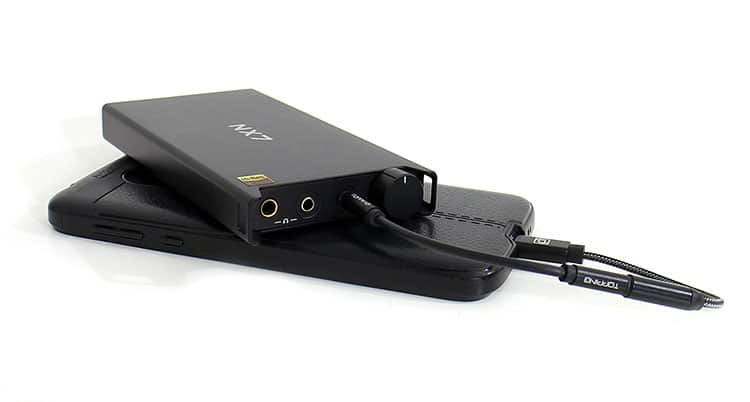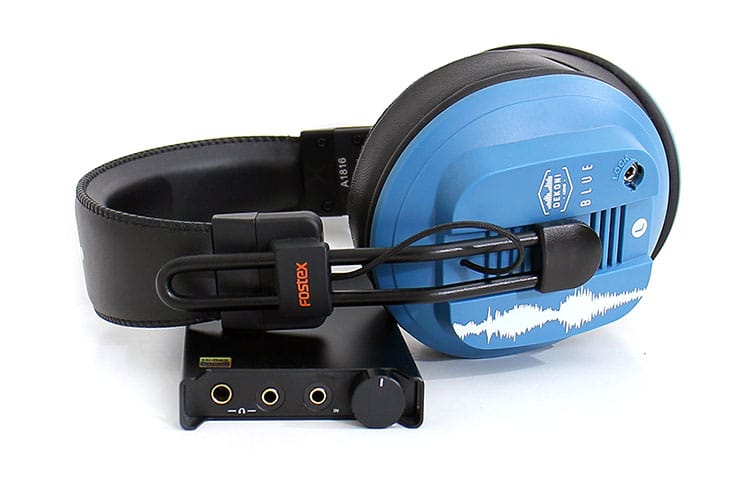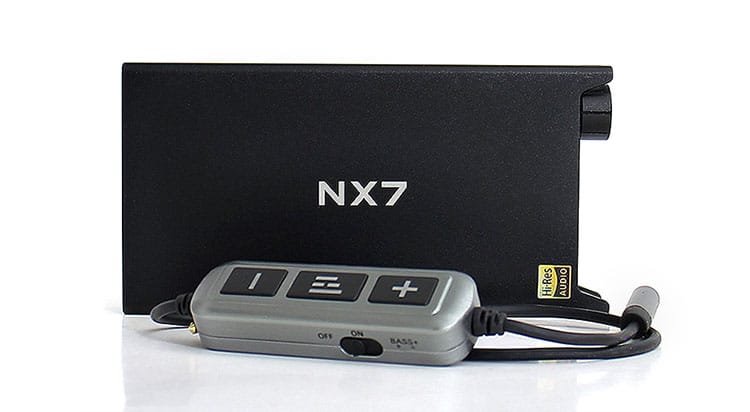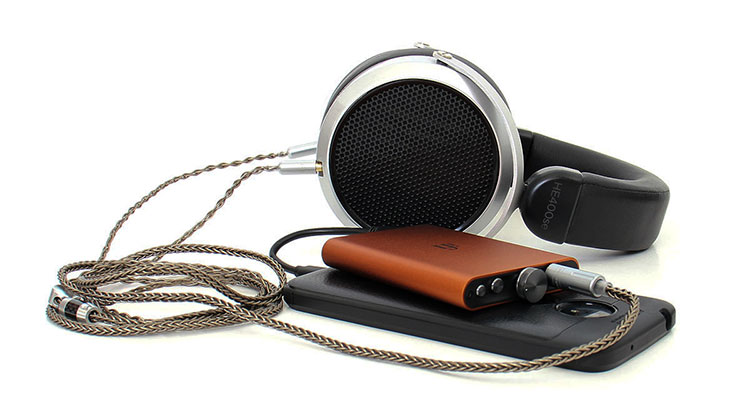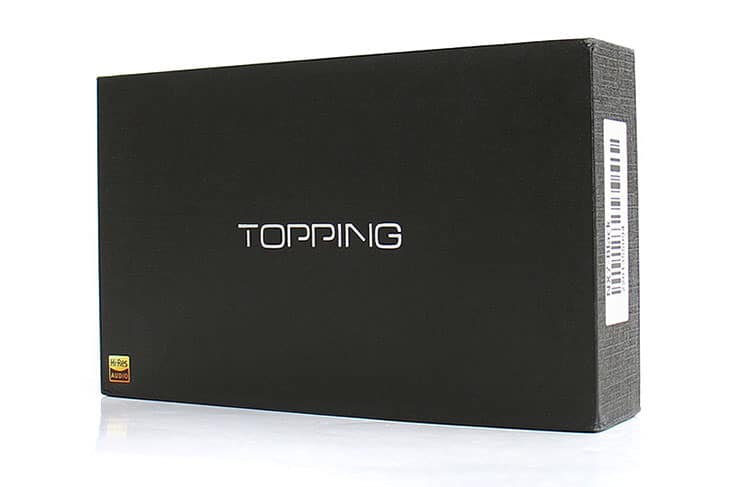Synergy
I used the NX7 along with a few dongles like the MoonRiver 2, Shanling’s UA5, and the ddHiFi TC44C. Each combo gave me some interesting results.
However, my favorite combo was the NX7 with the Periodic Audio Rhodium dongle and not so much because it excelled in performance but more so because of its size format and portability acceptance factor.
Efficiency
The Topping NX7 performs well with hard-to-drive cans and with IEMs that tend to produce hiss just as well. There seems to be no hiss whatsoever especially if the gain is set on the lowest position. Topping seems to have tweaked the low-level setting specifically to remain hiss free with the most sensitive IEMs.
The implementation of cleaning up the power before it enters the circuitry with battery power once again is proving worthy of a place in portable audio which seems to help the end result and not just act as a portable battery source.
The available power on tap is enough for any can you want to use basically. I paired it with a Dekoni Blue and obtained very good results for example. The NX7 could even throw into the mix some decent bass response from these cans. But to be honest I don’t feel as if the Dekoni blue is as hard to drive as some say they are.
But if the NX7 can push those particular cans to very loud levels of volume production I would say unless you have a Susvara or a HE6SE and perhaps a couple of others you’ll be pleased by pairing them with this amp and will certainly not starve them of power.
Power
Power-wise, we could go two ways here by speaking of either power output or battery power efficiency. Let’s get battery efficiency out of the way first.
Topping states you could get over 6 hours and that is very conservative. My unit played for up to 9 hours with full-sized headphones without a need for a visit to the charging station. Two and a half hours of charge time seems to be accurate and in line with my results and Topping’s posted number as well.
I also like the fact that in a desktop scenario all you have to do is keep a 5V source on it with no negative effects. You could even use a cheap charger because the system bypasses that current so you never have to worry about noise coming from the adapter or the need to use filters or expensive chargers.
As far as driving power goes, only the most demanding cans could possibly present a challenge to drive with the NX7 and I could only think of about two to three cans that I would not consider using with this amp as mentioned before but the rest are game.
Select Comparisons
Helm Audio DB12 THX AAAMP
$179.99
Technical
Being one of the most recent analog portable amplifiers to hit the market the Helm Audio DB12 throws into the mix a quirky design aspect that adds a modern-day twist to the conventional portable amplifier design and it certainly does look different from the rest.
The most important feature would be the THX implementation and I did some late investigations as to what was really behind the hood of this battery powered portable analog amplifier.
It seems to have a chip with specifications that have similar numbers to the THXAAA-38 but also has similar characteristics to the THXAAA-0.
So my conclusion is to forget about it and assume it’s a highly customized configuration within the DB12 so I could just get on with it and enjoy it.
Design
The Helm Audio DB12 certainly has a smaller stature here and is indistinguishable even from afar. The first feature that strikes your vision is the three jumbo pushbuttons with volume plus a pause/play button which are workable even when the DB12 is inside your pocket. They seem very accessible in design.
The body is a small 70mm long and 12x22mm thick but one quirk I have with the DB12 is that both ends have attached wires and I certainly would have preferred removable cables on both ends. If the wires become intermittent you have to trash the unit, unfortunately.
One benefit the DB12 has over the NX7 is that you could use a 3.5mm microphone-equipped IEM and the DB12 will pass the signal along that fourth wire but if you pair the DB12 with a dongle, even with their own Bolt, you lose the feature.
Performance
Both these amplifiers seem to have an almost similar tonality and aggressiveness that propels music in a forward manner.
However, the NX7 can go way beyond what the DB12 can produce far as volume is concerned with the least amount of distortion since it definitely has a noticeably higher amount of raw power output.
In the purest sense, both amplifiers perform well but the DB12 does have a bass boost feature that completely colors sound output and I preferred the particular switch in the off position, to be honest.
And since the NX7 lacks sound-altering DSP settings it seems the better unit if you aim for purity but of course at the expense of having to deal with a bulkier setup.
iFi Audio hip-dac2
$189.00
Technical
Of course, these two units differ in the fact that the iFi Audio hip-dac2 has a built-in USB DAC but their cost is practically the same and they both give you the same end result which is to take music from your mobile device and send it to a headphone amplifier section.
I just wanted to give the reader an alternative. The fact is that both these units have internal batteries, use a single wire to feed the signal into the unit and both have two headphone outs in the same 3.5mm and a 4.4mm balanced output configuration.
Design
Another similar aspect about these two pieces of gear is the analog volume control which doubles up as the power switch. Both knobs seem to be made of metal just like the outer shells on both these models.
They both work smoothly but it seems the hip-dac2 has a slightly higher level of channel imbalance.
The hip-dac2 has the smaller stature of the two and is also lighter. The hip-dac2 is the more colorful unit and even sound-wise that statement holds true since the hip-dac2 has the XBass feature besides a warm character.
Both models have gain controls of some sort but the NX7 edges it out since it has a 3 stage instead of a two-way.
Performance
If you just compare the amplification section alone, of course, the NX7 wins performance-wise due to the NX7’s higher output and it might also be the cleanest in lab measurements.
However, unit versus unit the hip-dac2 does a better job since it has a built-in XMOS and Burr Brown op-amp DAC setup which of course will give a cleaner end result versus amplifying a 3.5mm port.
The hip-dac2 also has XBass which is a fun implementation and one of the best bass boost features around. However, purists might argue that for the sake of maintaining a cleaner end result, features like that should not be used but they sure add some fun into the mix.
The hip-dac2 could not supply enough raw power to push the hardest-to-drive headphones out there but the Topping NX7 can. After all, it is a dedicated amplifier.
The problem is most of the new mobile devices nowadays are coming without dedicated line-outs so eventually if that port fades away completely you will not have many ways of feeding a clean signal to the NX7 portably at some point.
Our Verdict
Do we in fact have one of the most powerful portable headphone amplifiers here? I would say perhaps because there are ways of obtaining an even higher power output in a portable rig but most of the contestant models have built-in DACs so that would disqualify them.
The Topping NX7 ideally needs a source with a SE line-out to keep the signal as pure as possible and for portability’s sake a small source. That might reduce your options in this day and age.
The headphone out of my mobile device just did not cut the mustard so double-amping from a dongle would be the next best tip if you want to keep the package quite small. I personally could tell there was a rather large difference and a big jump in dynamics in comparison when I fed it with an IC from a dongle.
Once set up correctly, the NX7 does have large amounts of very clean power and is absent of hiss and even the volume knob is absent of imbalance.
I actually used the Topping NX7 in a desktop setup most of the time successfully with the only negative aspect present being that there were two wires up front instead of just one.
So, since it does well in that particular scenario I’ll just consider the Topping NX7 a very versatile and excellent sounding desktop amplifier with portability capability.
Topping NX7 Technical Specifications
- NFCA Modules
- 3-step gain switch
- Dual 3.5 mm + 4.4 mm headphone outputs
- 1200mW x2 @16Ω THD+N<0.1%
- 1400mW x2 @32Ω THD+N<0.1%
- 820mW x2 @64Ω THD+N<0.1%
- 180mW x2 @300Ω THD+N<0.1%
- 90mW x2 @600Ω THD+N<0.1%
- SNR @ MAX OUT 1 kHz (A-wt): 135dB
- SNR @ 50mV OUT 1 kHz: 104dB
- Dynamic range @1kHz (A-wt): 135dB
- Frequency response: 20 Hz – 40 kHz (±0.1dB)
- Actual noise level
- Low gain: <0.3uVrms
- Medium gain: <0.3uVrms
- High gain: <1.3uVrms
- 3 x 2.7 x 0.62” (13.5 cm x 7.0 cm x 1.6 cm)


